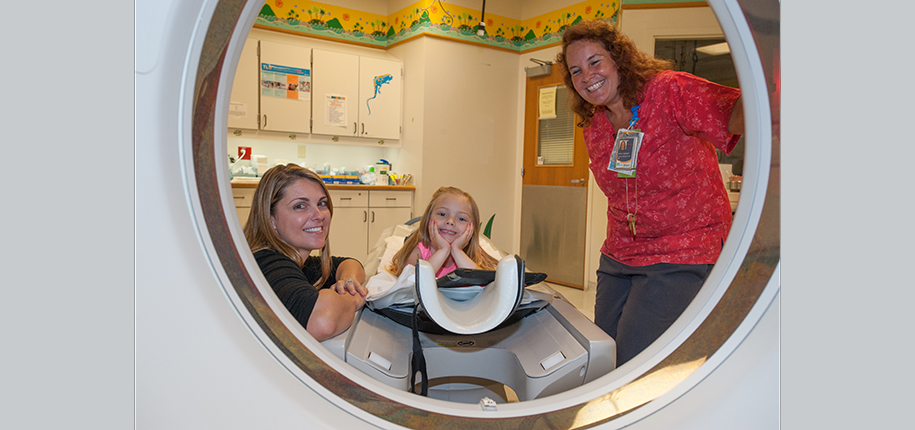
Cincinnati Children’s has five CT machines, including the ones located on Main Campus as well as at our outpatient locations. We do about 11,000 patient scans yearly in our Radiology Department. Since its debut in the 1970’s, CT has become a crucial tool in medical imaging. Below are some frequently asked questions asked about CT.
Q: What is CT?
A: CT stands for computed tomography. It is a machine that takes x-ray images from the body at different angles to produce cross-sectional images or scans of areas inside the body. Each picture created shows the bones, organs, and other tissues in a thin “slice” of the body.
Q: Why do you have to drink before a CT exam?
A: Depending on which part of your body is being scanned, some CT exams require you to drink a contrast liquid before the scan. A contrast agent blocks x-rays and appears white on images, which improves the pictures taken inside of the body by emphasizing blood vessels, bowel or other structures.
Q: Will getting a CT exam hurt?
A: The exam itself is painless. Again, depending on which part of the body is being scanned, a patient may be required to take contrast through intravenous (via a vein) injection before the scan. Just like getting a radiography chest x-ray, it’s simply taking a picture of a part of your body with x-rays. The x-rays are invisible and you can’t feel them.
Q: How loud is the CT machine?
A: Our current CT scanner is not as loud as our MRI scanner. It is comparable to a quiet hum, just like a washer or dryer. Unlike an MRI, it does not clank or beep.
Q: Can I bring my cell phone or tablet inside the CT room?
A: Yes, you can bring in your portable electronics to the room. Unlike an MRI room, it is not a magnetized environment where it can damage your phone or tablet.
Q: How long does a CT exam take?
A: It all depends on what your doctor orders the exam for, but typically it’s around 10-15 minutes to scan the patient. There are exams that take longer, such as those that involve attaching monitors to the patient’s body or inserting an IV.
Q: Why do parents or caregivers have to wear lead aprons?
A: The lead aprons help block radiation from the patient. Like an x-ray exam, radiation is used to create an internal image of the body. When we take an image with our CT machine, the radiation goes through the patient’s body and scatters into the room. Anyone inside the room that is not getting imaged needs to wear lead protective clothing.